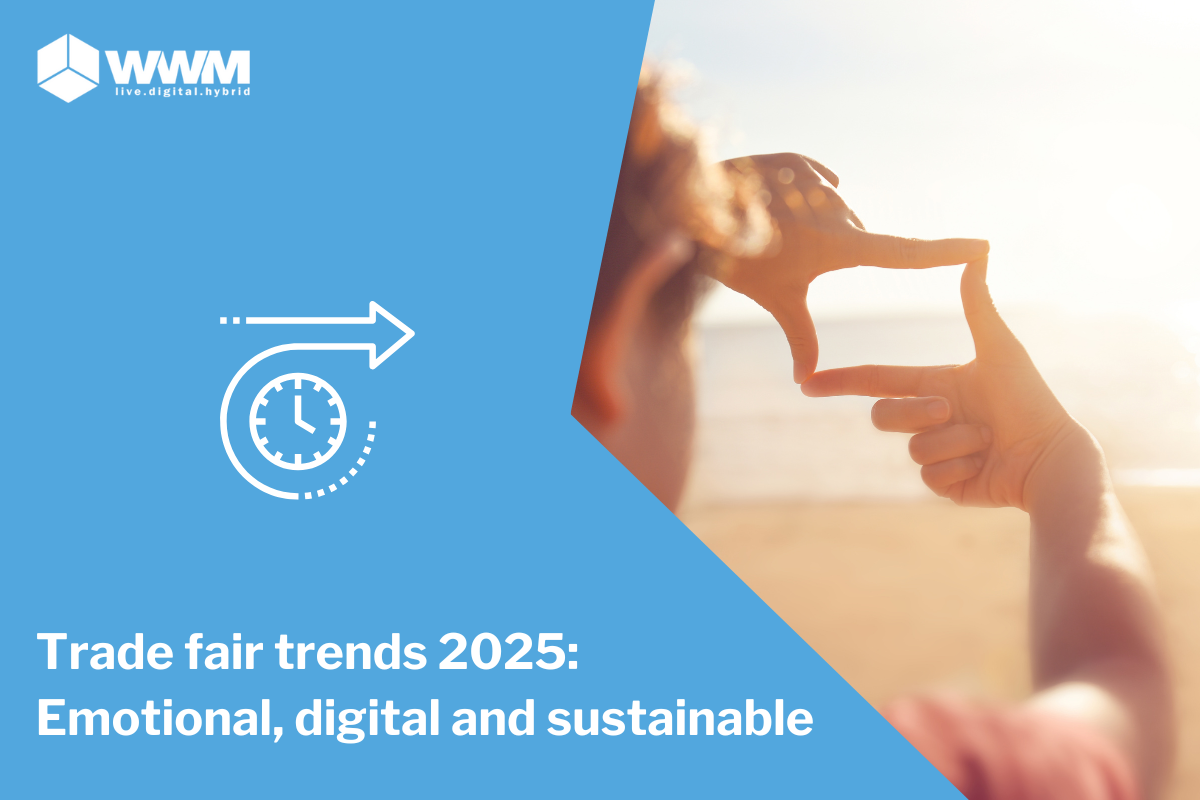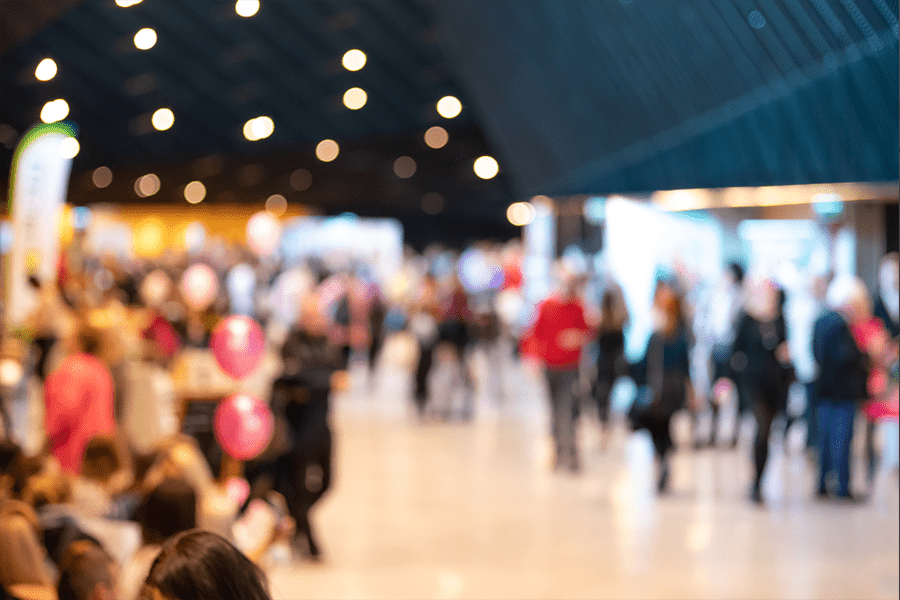Trade fair trends 2025: Emotional, digital and sustainable
In recent years, trade fairs have evolved from mere platforms for product presentations to important touchpoints for brand-building experiences....
4 min read
 Bernd Freiter
:
Friday, 20. September 2024
Bernd Freiter
:
Friday, 20. September 2024

The air at a trade fair is full of excitement: people streaming through the halls, loud conversations, gleaming stands, products in the spotlight - it's the spectacle of direct exchange. But behind the scenes, a change is taking place that is as quiet as it is profound: digitalization . This term, which has hovered over many industries like an empty promise in recent years, is having a quiet but radical effect in the trade fair world. For exhibitors, digitalization offers more than just an extension of traditional trade fair construction - it opens up a new era of reach, interaction and sustainability.
Trade fairs were once the stage for international business, but participation was physically limited. Only those who made the journey, got on a plane and wandered through the halls were able to gain an impression. But today, in 2024, these boundaries are becoming blurred. Hybrid trade fairs, which combine physical and digital elements, have exponentially expanded companies' radius of action.
Imagine this: A German SME exhibiting at the trade fair in Munich is suddenly contacted by a buyer from Shanghai. Digital visitors from all corners of the world can access the offer without any major logistical hurdles. A study by UFI , the Global Association of the Exhibition Industry, shows that hybrid events increased the number of participants by an average of 32% in 2023. This figure is not only impressive, it also signals a paradigm shift: the physical space is no longer the limit to reach, but the starting point.

A stand at a trade fair is like a small theater: there are main actors, spectators and the interaction often takes place in short, intense moments. But what if this exchange is not limited by time and space? This is where the great strength of digitalization lies. It makes it possible for the dialog between exhibitors and visitors not to fall silent when the trade fair ends.
Digital tools such as live chats, webinars and virtual showrooms keep the connection alive. Visitors can find out more about a company, get in touch with it and compare products at their leisure even after the trade fair has ended. According to an analysis by Messe Düsseldorf, digital interactions at hybrid events increased by up to 45% . A virtual showroom, which is available around the clock, offers a new form of customer dialog that complements and expands the classic trade fair visit.
Virtual reality and augmented reality are more than just gimmicks. They transform the trade fair stand into an interactive experience where products can be tried out and tested in a digital world. For example, a customer at the trade fair in Cologne can test a new vehicle model with VR glasses, while a potential buyer in New York can enter the same stand virtually. The stand is thus present everywhere - and at all times.
ata as gold: the trade fair presence becomes measurable
One problem with many trade fairs to date has been that their effectiveness is difficult to measure. How successful was the stand really? How many of the contacts lead to real business deals? This is where digitalization opens up completely new possibilities. Big data and analytics tools make it possible to precisely track visitor behavior and measure the success of trade fair appearances in real time.
A survey by Messe Frankfurt shows that exhibitors were able to increase their lead generation by an average of 35% using digital tools. Every visitor leaves behind digital traces that allow conclusions to be drawn about their interest. Which products were of particular interest to them? How long did they stay at which stand? This data enables customized tracking and increases the likelihood that a trade fair visitor will become a customer.
And there's more: with the help of customer relationship management systems (CRM), the data obtained can be used in the long term. Customer relationships can therefore not only be established, but also maintained in the long term. This is an invaluable advantage at a time when personalization and addressing target groups are crucial.
At traditional trade fairs, the stand was often static.Once set up, it was unchangeable for the duration of the trade fair. But the digital world is flexible. Content can be adapted at any time, presentations updated and new offers introduced.This means that exhibitors can react to current developments and change their communication spontaneously.
This flexibility extends not only to the trade fair presentation itself, but also to the subsequent use of content.Digital stands can be reused, be it at the next trade fair or in ongoing customer communication. This shows how digitalization also saves resources in the long term and sustainably strengthens a company's presence.

The pandemic has changed the way trade fairs are organized forever.
While purely digital events are reaching their limits, it is becoming clear that hybrid formats are the future. They combine the strength of personal contact with the advantages of digital reach. According to a survey by the market research institute Statista, 72% of companies plan to continue using hybrid trade fairs in the future.
This means that trade fairs are not disappearing, but transforming. Digitalization makes it possible to combine the best of both worlds: direct exchange and global reach. Companies that focus on this development not only have their finger on the pulse of the times, they also secure a competitive advantage in the long term.
The quiet but powerful revolution of digitalization is making trade fair appearances more flexible, efficient and measurable.
It expands the space in which companies can present themselves and makes it possible not only to reach more people, but also to operate more sustainably and cost-efficiently. Exhibitors who use digital tools and hybrid concepts benefit from these developments in several ways.
The trade fair of the future is not just a place for physical exchange - it is a dynamic, borderless experience. It makes it possible to keep up the conversation with customers even when the halls have long since closed.

In recent years, trade fairs have evolved from mere platforms for product presentations to important touchpoints for brand-building experiences....

Exhibitions are among the most elaborate forms of live communication. They bring companies, customers, partners and the media together with the aim...

Measuring visitor flows is becoming increasingly important in the constantly advancing digitalisation of live communication. It is visualised in...